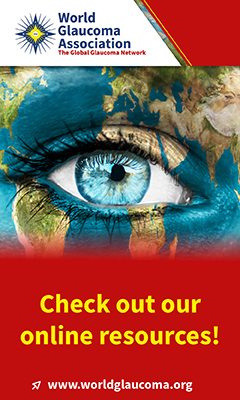advertisement

Abstract #51911 Published in IGR 14-4
Ocular risk factors for progression of primary open angle glaucoma in the Tunisian population
Loukil I; Korchène N; Hachicha F; Wathek C; Bouguerra C; Mallouch N; Bhiri R; Hijazi A; Zouari B; El Afrit MAJournal Français d'Ophtalmologie 2013; 36: 324-330
PURPOSE: To evaluate intraocular pressure parameters and the role of other ocular risk factors in the progression of primary open angle glaucoma. PATIENTS AND METHODS: We performed a retrospective analysis of long-term glaucomatous progression in 140 patients (280 eyes) with primary open angle glaucoma (POAG) between 1998 and 2009. After analyzing their disease progression, the eyes of our patients were divided into two groups: group 1 (G1) consisted of eyes with worsening of their POAG, and group 2 (G2) consisted of the eyes that remained stable. The indicators of progression studied were factors associated with glaucomatous optic neuropathy, other ocular risk factors, and treatment-related risk factors. RESULTS: We found 188 eyes with stable visual fields (G2) and 92 eyes with glaucoma progression (G1), for a progression rate of 32.9%. Mean intraocular pressure (IOP) at diagnosis was statistically higher in the cases with progression, 22.78mmHg vs. 19.9mmHg for stable cases (P=0.03; OR=5.25). Higher final intraocular pressure (IOP) was also associated with progression (16.82mmHg for G1 vs. 14.85mmHg for G2; P=0.051). IOP less or equal to 12.75mmHg was identified as the target pressure for our population. Progressed eyes also showed a statistically higher diurnal peak IOP (23.13mmHg vs. 19.87mmHg for G2; P=0.007). Long term IOP fluctuation was also predictive of progression (4.43mmHg for G1 vs. 2.31mmHg for G2; P=0.003). Eyes with initial visual field defect more than 8.2dB had 4.8 times the risk of progression (P=0.07). However, eyes diagnosed in an early glaucoma stage had four times the chance of maintaining a stable visual field (P=0.003). Statistically significant risk factors between the two groups also included: pseudoexfoliation (OR=2.84; P=0.05), cornea less than 505μ (OR=10.89; P=0.005), topical beta blockers (P=0.003), and more than two topical medications (OR=3; P=0.003). CONCLUSION: It is currently known that IOP lowering contributes to glaucoma stabilization. However, this single criterion remains insufficient, as other, particularly ocular, factors have been implicated in glaucoma progression. Identification of these risk factors allows for a better therapeutic approach toward these patients, so as to preserve their vision and quality of life.
Service d'ophtalmologie, CHU La Rabta, 1007 Jabbari, Tunis, Tunisie. Electronic address: loukiliness@yahoo.fr.
Full articleClassification:
6.20 Progression (Part of: 6 Clinical examination methods)
9.2.2 Other risk factors for glaucoma (Part of: 9 Clinical forms of glaucomas > 9.2 Primary open angle glaucomas)

